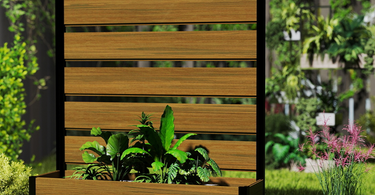Understanding the Benefits of Line Raised Garden Beds
Maximizing Space in Urban Settings
Line raised garden beds are a game-changer for urban gardeners. They make the most of limited space in cities. These beds can fit into narrow areas like balconies or small yards. They allow for vertical gardening, which increases growing area. You can grow more plants in less space. This is perfect for urban dwellers who want to garden but lack room.

Line raised beds also make it easier to reach plants. You don't have to bend as much, reducing back strain. They can be built at different heights to suit your needs. This makes gardening more accessible for people with mobility issues. You can tend to your plants without stepping on soil, which prevents compaction.
Enhancing Soil Quality and Plant Health
Raised beds offer better control over soil quality. You can fill them with rich, organic soil that's perfect for plants. This soil warms up faster in spring, allowing for earlier planting. It also drains better, preventing waterlogged roots. Better drainage means healthier plants and less risk of disease.
You can tailor the soil mix to suit specific plants. This allows for better nutrient management. Plants in raised beds often grow faster and produce more. The controlled environment makes it easier to manage pests and weeds. You can add compost and fertilizers more efficiently. This leads to healthier plants and better yields.
The Aesthetic Advantage of Modern Garden Design
Line raised garden beds add a modern touch to urban spaces. They create clean lines and a neat appearance. This structured look fits well with contemporary architecture. You can choose materials that match your home's style. Options include wood, metal, or even recycled materials.
These beds can be arranged in patterns to create visual interest. They can serve as borders or dividers in your outdoor space. You can mix different heights for a dynamic look. Adding trellises or arbors can create vertical interest. This modern approach turns your garden into an outdoor living area. It's not just functional, but also a beautiful extension of your home.
The Small Garden: A Case Study in Urban Gardening Success
The Journey of a Small Garden in the City
A small garden in New York City shows the potential of urban gardening. It started as a barren rooftop space. The owners transformed it using line raised garden beds. They chose durable materials that could withstand wind and sun. The beds were designed to fit the odd shape of the roof.

They planted a mix of vegetables, herbs, and flowers. Vertical elements like trellises were added for climbing plants. This made the most of the limited space. Over time, the garden became a lush, productive oasis. It proved that even tiny urban spaces can become thriving gardens.
Key Factors Behind Its Success
Several factors contributed to this garden's success. First was careful planning of the layout. Each bed was positioned to maximize sunlight exposure. The owners chose plants suited to the local climate. They installed an efficient irrigation system to ensure consistent watering.
Soil quality was a top priority. They used a custom mix rich in organic matter. Companion planting helped control pests naturally. Regular maintenance kept the garden healthy and productive. The owners also adapted their techniques based on what worked best. This flexibility was key to overcoming urban gardening challenges.
Lessons Learned and Best Practices
This small garden taught valuable lessons. One was the importance of vertical space. Using trellises and hanging planters doubled the growing area. Another lesson was the need for wind protection in rooftop gardens. They added small windbreaks to shield delicate plants.
Regular soil testing helped maintain nutrient levels. Composting kitchen scraps provided free, rich fertilizer. The owners learned to rotate crops to prevent soil depletion. They also discovered the benefits of mulching to retain moisture. These practices led to a sustainable, productive urban garden.
Implementing Line Raised Garden Beds in Your Urban Space
Selecting the Right Materials and Contractor
Choosing the right materials is crucial for line raised garden beds. Common options include wood, metal, and composite materials. Each has pros and cons. Wood is natural but may rot over time. Metal is durable but can heat up in sun. Composite materials last long but can be pricey.

When selecting a contractor, look for experience in urban gardening. Check their portfolio for similar projects. Ask about their knowledge of proper drainage and soil composition. Ensure they understand local building codes and permits. A good contractor will offer design ideas tailored to your space.
Planning and Layout Strategies for Small Spaces
Start by assessing your available space. Consider sunlight, water access, and traffic flow. Sketch out different layouts to find the best fit. Remember to leave room for pathways and seating areas. Think about how you'll use the space throughout the year.
In small spaces, multi-functional designs work well. Consider beds that double as seating. Plan for vertical elements to maximize growing area. Think about how your garden will look from inside your home. This can help create a cohesive indoor-outdoor feel.
Ongoing Maintenance and Troubleshooting Tips
Regular maintenance is key to a thriving urban garden. Water consistently, especially during dry spells. Monitor for pests and diseases. Act quickly if you spot any issues. Prune and harvest regularly to encourage healthy growth. Test soil pH annually and adjust as needed.
Common issues include poor drainage and pest infestations. To improve drainage, add organic matter to soil. For pests, try natural deterrents first. If problems persist, consult a local gardening expert. Remember, urban gardens face unique challenges. Be patient and willing to adapt your approach as you learn.
